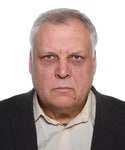
Prof. Mikhail Sergeyevich Ermakov
Mechanical Engeneering Problems Institute St.Petersburg 199178, Russia
Title: How to describe all uniformly consistent sets for nonparametric tests?
Abstract:
For parametric sets of alternatives the efficiency of nonparametric tests has been
studied quite thoroughly. If sets of alternatives are contained in a certain class of
functions of given smoothness, the distinguishability of these sets by nonparametric
tests is also fairly well explored.
In talk, we explore more general setups. New results are presented and a review
of recent results is provided, answering two questions:
Under what necessary and sufficient conditions can nonparametric sets of alter-natives be distinguishable based on some nonparametric tests? Here we allow sets
of alternatives to approach the hypothesis [1, 2].
What necessary and sufficient conditions should nonparametric sets of alternatives satisfy if they are distinguished by one of the most wide spread nonparametric
tests? The results are obtained for sets of alternatives defined both in terms of distribution functions and densities [3].
References
[1] Ermakov, M.S. On Consistent Hypothesis Testing. Journal of Mathematical Sciences. 225(5),
(2017), 751-769.
[2] Ermakov, M.S. On uniformly consistent tests. https://arxiv.org/abs/2303.00680
[3] Ermakov, M S On Uniform consistency of nonparametric tests I. Journal of Mathematical
Sciences, 258 (2021), 802-837.
Biography:
I, Mikhail Sergeyevich Ermakov, was born on 12/25/1952. In December 1975
I graduated from the Faculty of Mathematics and Mechanics of Leningrad State
University with a degree in mathematics. Since January 1976 I have been a trainee
researcher at the Laboratory of Statistical Methods of the Leningrad Branch of the
Mathematical Institute, Academy of Sciences of the USSR. Since January 1978.
I am a junior researcher there. In 1979. I defended my PhD thesis. At the
Mathematical Institute, I, together with Professors I.A.Ibragimov (POMI) and
R.Z.Khasminsky (Institute of Information Transmission Problems of the USSR
Academy of Sciences), explored the problem ”when sequential estimation provides a
significant gain compared to estimation with a fixed sample size” [1]. This problem
was set by academician Yu.V.Linnik.
From September 1981 to September 1992, I worked at the applied institutes
of the USSR Academy of Sciences and Leningrad State University. Basically, I
was engaged in solving applied problems of probability theory and mathematical
statistics. In particular, for solving applied problems in the geophysics in 1990, I
received a diploma of a senior researcher in the specialty ”geophysics”.
At the same time, I continued my research on mathematical statistics. I have
constructed asymptotically minimax estimators in the deconvolution problem with
Gaussian stationary noise [2, 3], if a priori information is given that solution belongs
to a ball in Sobolev space. I found asymptotically minimax tests for the problem of
detecting a signal in Gaussian white noise when the set of alternatives is an ellipsoid
in L2 with a cut-out ”small ball”[4]. These results are obtained for the strong
asymptotics of the convergence rate of L2-norms of estimators and probabilities of
type I and type II errors, respectively.
In 1992 I defended my doctoral dissertation in probability theory and mathematical statistics in St.Peterburg Branch of the Mathematical Institute, Academy
of Sciences. The research has been devoted asymptotic problems of statistics.
From September 1992 to the present I have been working a leading researcher
at the Laboratory of Reliability Theory Methods at the Institute for Problems in
Mechanical Engineering of the Russian Academy of Sciences. Below main scientific
results for subsequent years are provided.
1. Extension to the zone of moderate deviation probabilities of Hajek-Le Cam
lower bound in statistical estimation. Similar results were obtained for Pitman
efficiency in hypothesis testing. These results were obtained for both strong and
logarithmic asymptotics [5, 6].
2. Proof of the asymptotic minimax properties of classical nonparametric tests
when the set of alternatives are provided in terms of the distance method [7, 8]
3. The necessary and sufficient conditions were established for the uniform consistency of sets of hypothesis and alternatives for the most widespread setups of
hypothesis testing (hypothesis testing on a density, intensity of Poisson process,
signal detection, ill-posed problems with Gaussian noise and so on) [9, 10]. Here
we supposed that the sets of hypotheses and alternatives are consistent if there is
tests for which they are consistent.
4. The necessary and sufficient conditions for the uniform consistency of sets
of alternatives are established for the most widespread nonparametric tests. Con�ditions were provided for sets of alternatives defined both in terms of distribution
functions and densities [8].
From September 1996 to the present I have been a professor at the Department of
Statistical Modeling of the Faculty of Mathematics and Mechanics of St. Petersburg
State University. I lecture on intermediate and advanced statistics for bachelors,
masters and postgraduate students.